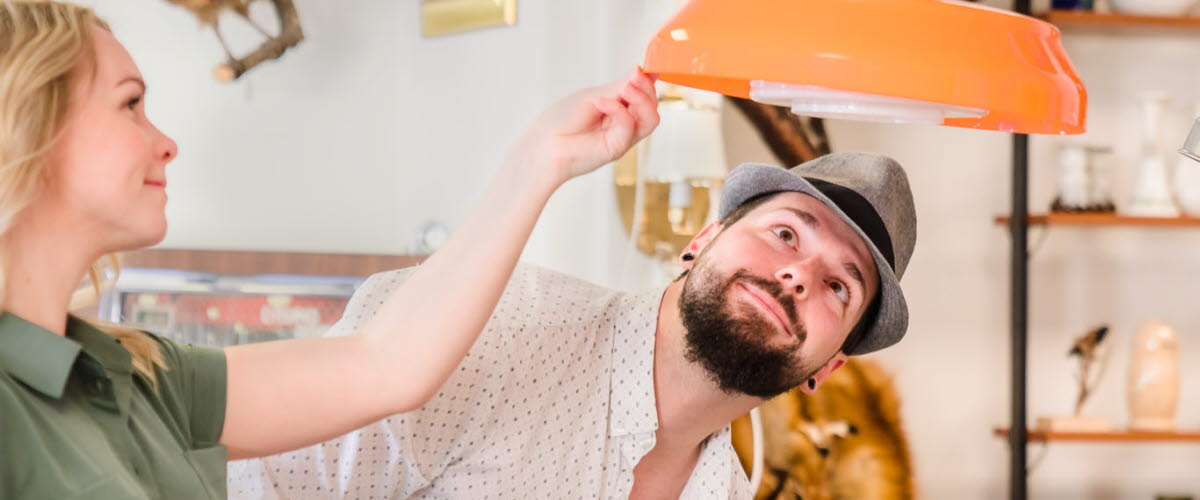Le marché aux puces
Fleas, retro style and saving the environment!
Fleas were common companions when shopping at the end of the 19th century at Le Marché aux Puces, the market that gave us the term “flea market”. In Saint-Ouen, on the outskirts of Paris around 1890, junk-dealers began selling old clothes, furniture and scrap metal to the city’s inhabitants. A market began to form, grow and attract lots of shoppers, as well as smaller guests, fleas. The name, “Le Marché aux Puces” (‘the Market of Fleas’, or simply “les puces”, ‘the fleas’), grew alongside the market itself. The fleas might have disappeared, but the market is still going strong, and is still one of the world’s largest, attracting hundreds of thousands of visitors. Going second-hand shopping is now a popular activity, and not just in Paris; all over the world, people love things that are second-hand, vintage and antique. While reusing things has become trendy, it’s also a necessity if we want to contribute to a sustainable and better environment.
Flea market, antique store, second hand, vintage and retro, which is what?
But what is the difference between items sold at flea markets, antique stores, marked as second-hand, vintage or retro? The one thing they all have in common is that they sell items that are old, items that someone else has owned and used before. What differentiates them is the time period from which they originate. An item or garment must be at least 100 years old to be considered an antique. That means that something made in 1922 is now antique. The word “vintage” comes from Latin, and relates to grapes and wine production. The terms expanded over time to include wine of exceptional quality, and eventually other products such as high-quality clothes, decorations and furniture, preferably from famous brands. “Retro” comes from the French “rétrospectif”, meaning ‘to look back’, and in the worlds of clothing and furniture, it means to look back at previous trends from recent times; these products don’t need to be of a high quality. We often think of the fifties, sixties and seventies when we talk about retro.
But regardless of the time period, buying second-hand is a form of sustainable consumption that contributes to a better environment, and you also get to take a bit of cultural history home with you. Nowadays we have a large number of stores in Hjo offering second-hand items, and we promise there are no fleas :)
Shop second hand in Hjo
We have a number of permanent second-hand and antique stores that are open all year round, as well as some pop-up stores that appear in summer, along with the occasional car-boot sales, garage sales and markets. Take a look at our map to browse them all >>








